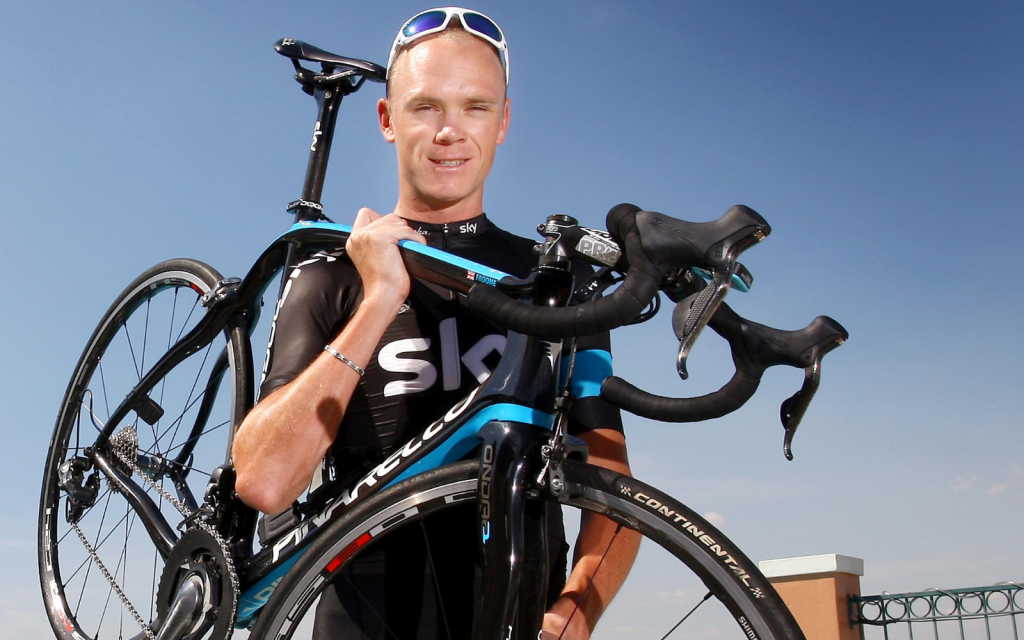A decade ago, Chris Froome was watching Lance Armstrong competing in the Tour de France from his boarding school, St Johns in Johannesburg, and dreamt of doing the same.
“I was 17 and I was fixated on it. I was in awe of the ambience of the crowd and the mountains. I had that ‘Wow, I’d love to do that one day’ feeling. That was the pipe dream but I never really – until recently – thought it would come true,” he recently told the Guardian, about the first time he saw the much-maligned, doping scandal-tainted Tour de France.
Froome, the South African-educated cyclist and Olympic bronze medallist tipped to win this year’s Tour, is the stark opposite of cycling’s fallen hero, Armstrong.
Tall and lean, Froome spent the off-season training in South Africa, getting ready for that “pipe dream”.
“Yeah, it’s exciting. It’s exciting to be in this position. I think every young cyclist dreams of winning the Tour de France,” he said in an interview in Johannesburg last month.
“I have the backing of the team and a good programme leading up to the tour. We have a few stints up at altitude planned. We basically go up to over 2000m with the rest of the team. We spend blocks of two weeks up there, getting our fitness levels right, up to the levels that we need to be to be ready for the tour.
“And I’m getting the backing, not just of any team, but the defending team. It’s something I have worked hard for and am ready for, hopefully.”
Honesty and matter-of-factness
Perhaps it is the way he said it, with such simple honesty and matter-of-factness, that makes him sound so believable. Perhaps it is how he hung back last year in a crucial stage so that Sky teammate Bradley Wiggins could take the overall yellow jersey, forcing him into second place.
Froome oozes quiet confidence about his cycling, but lacks the big ego that characterised Armstrong.
He was filled with calm patience during a photo shoot for Stuff magazine, answering questions in the blistering temperature of one of those January heat waves. And, in between, he politely stood for fan pictures with numerous cyclists, friends of the photographic team.
Ever the gentleman, he responded to Armstrong’s eventual doping confessions on Oprah with the seemingly weary detachment of having to answer the same question repeatedly: “I think the past couple of years have been clean years. If you look at the peloton, the doping era is definitely something of the past.”
Portrayed by the media as the man to lead the charge for this new clean era, he said: “It drives me, inspires me, to try to be that figurehead, that the sport has cleaned up.”
He puts this down to more “stringent testing”, which requires cyclists to log wherever they are at any time and submit to random testing. “Not many other sports have that. It is great that cycling is leading the way with anti-doping.”
Stringency
He has experienced this stringency firsthand. In 2008, his Spanish teammate on the Barloworld team, Moisés Dueñas, was busted for using the banned erythropoietin that riddled the sport for a decade, prompting Armstrong’s confession after years of denials. Froome watched Dueñas being led away in handcuffs by French police.
There is a certain mythology about Froome’s expected progress to win the Tour and an inevitable comparison with Armstrong, whose fight back from cancer is now the stuff of (discredited) legend.
Interestingly, Froome has had his own medical problems. He picked up the river parasite bilharzia during a trip to Kenya a few years ago, forcing him out of the Tour for three years.
But Froome is philosophical –and determined. He has come a long way from staring at the TV screen.
He lived in Kenya until he was 14, then came to South Africa. He went to school at St Andrews in Bloemfontein and St Johns in Jo’burg, then studied at the University of Johannesburg. A British citizen with a bronze Olympic medal in last year’s time trial, he has a house in Parkhurst and drives a Jaguar.
With that lean, hungry look of endurance athletes, Froome is quiet and pensive, giving curt answers to my questions about the equipment he uses, from his bike, a Pinarelleo Dogma 65.2 Think 2, to electronic gears, the Shimona di2 electronic groupset, to the advantages of oval-shaped Osymetric chainrings:
“They optimise your pedal stroke and eliminate the dead spot at the top and bottom. I don’t understand why people aren’t on them. [But] it’s great that people haven’t clicked yet, so we can keep using the advantage.”
Froome is every bit the kind of determined, hard-working athlete that he must have aspired to be. This is his year for making his dream come true.
This article first appeared in the Mail & Guardian.




